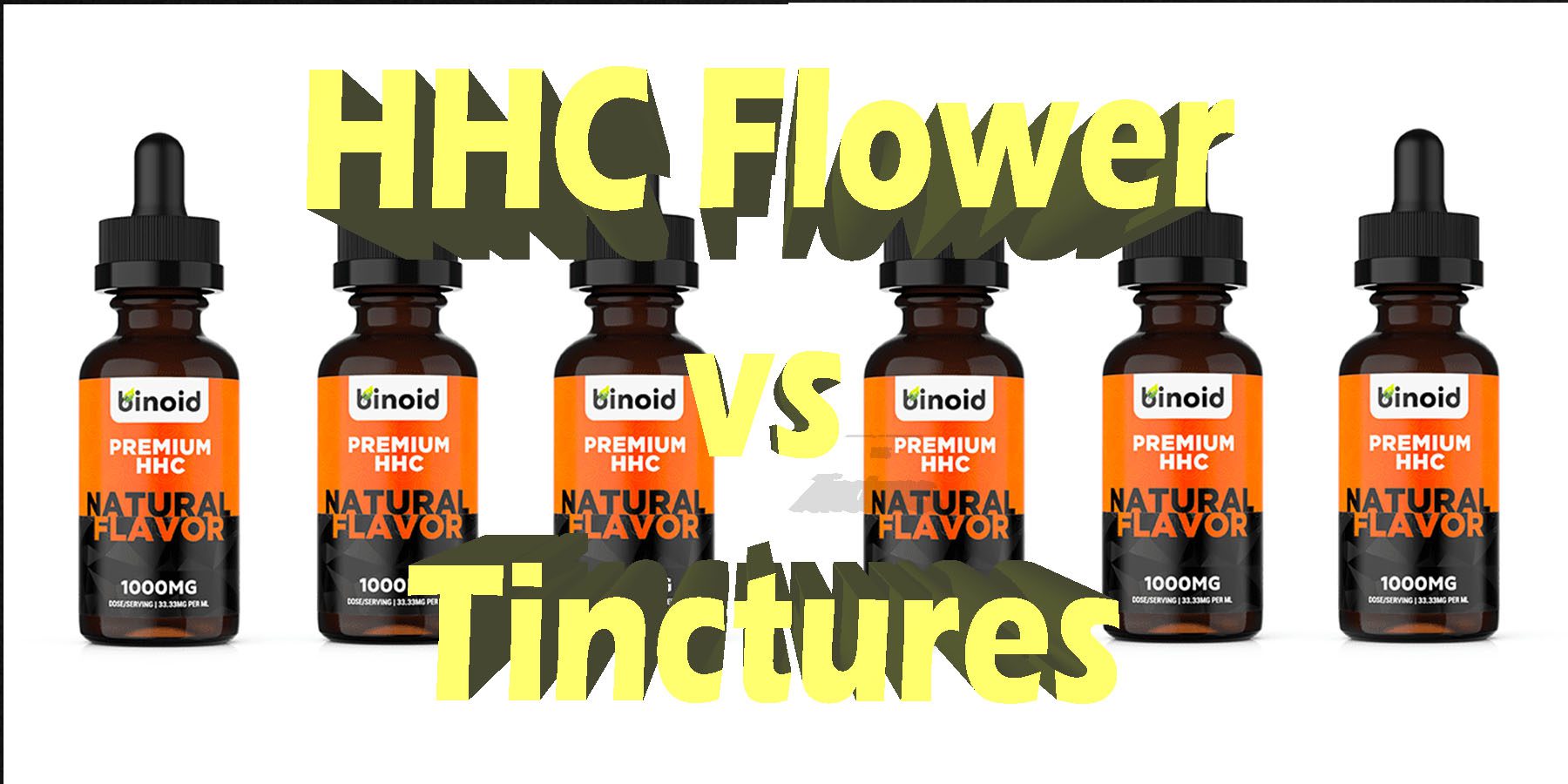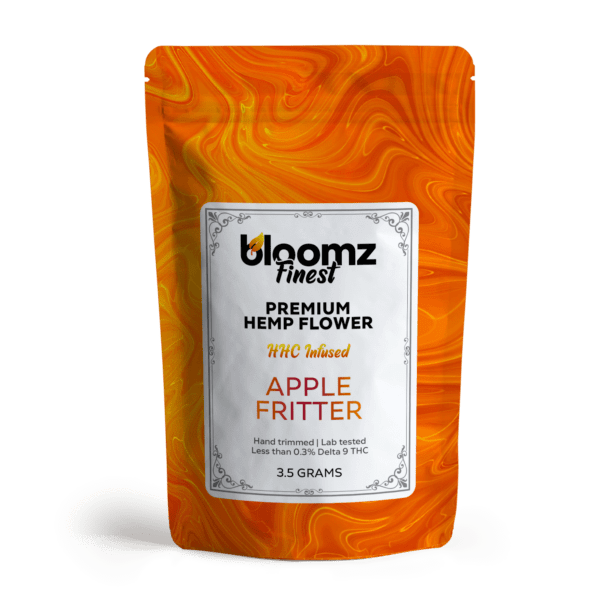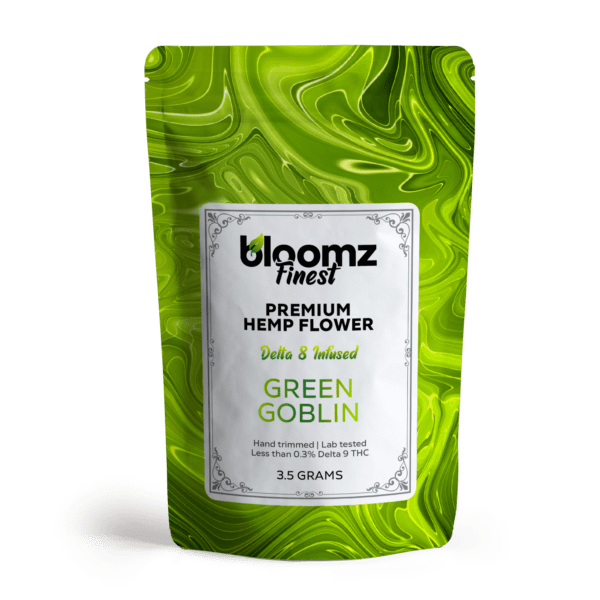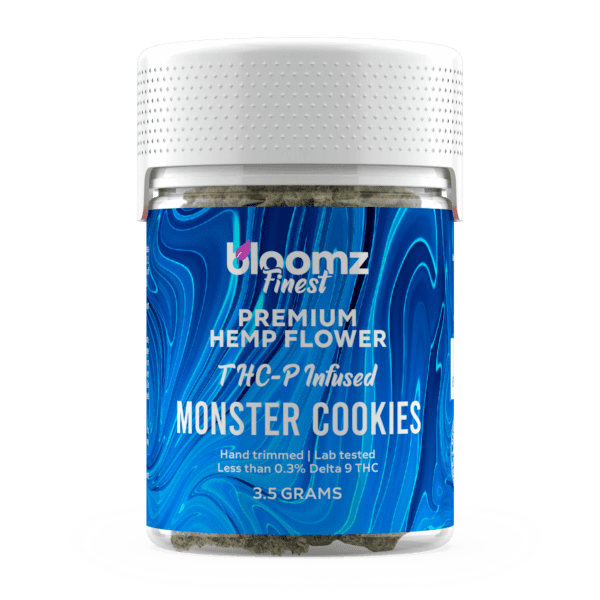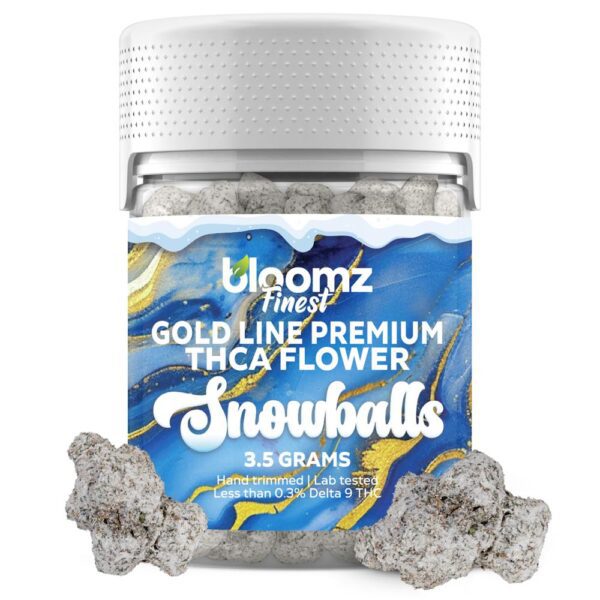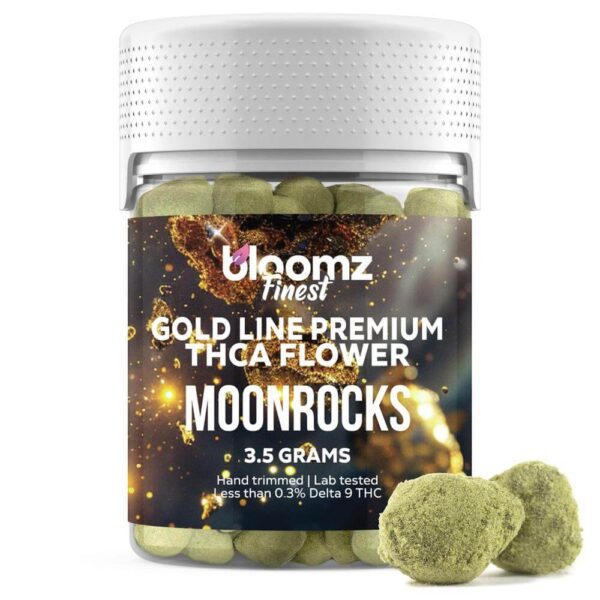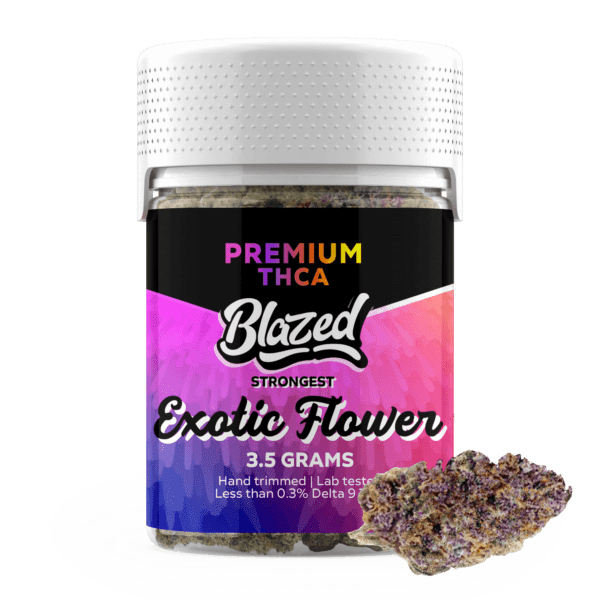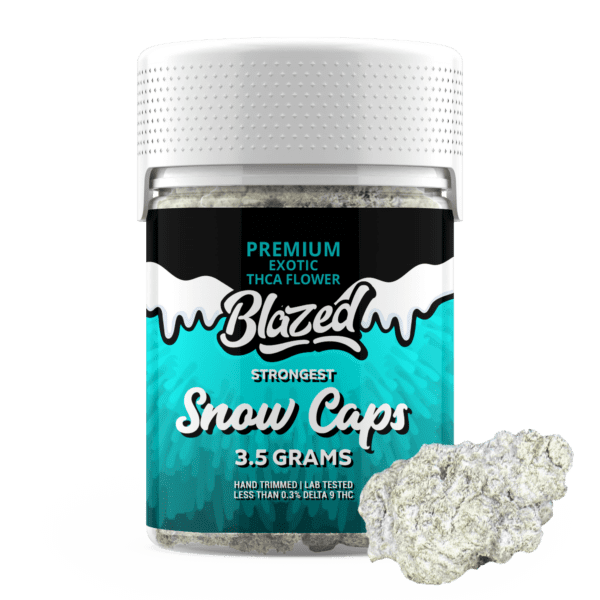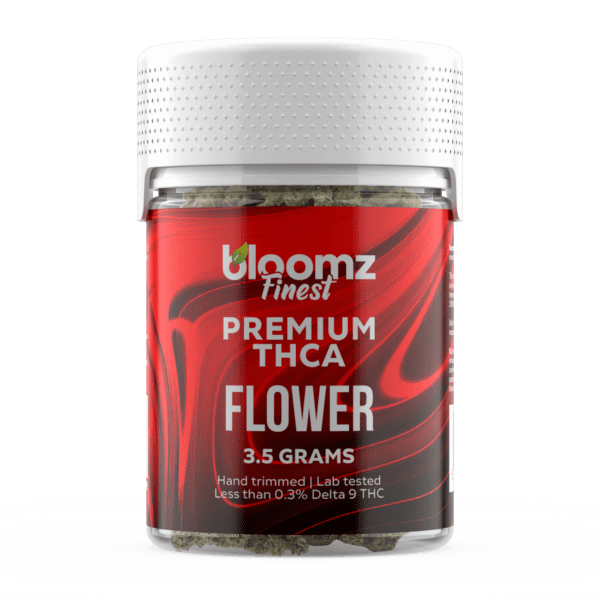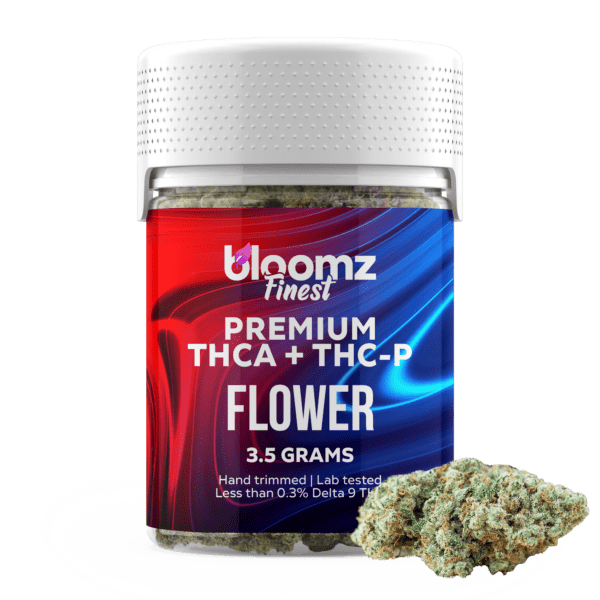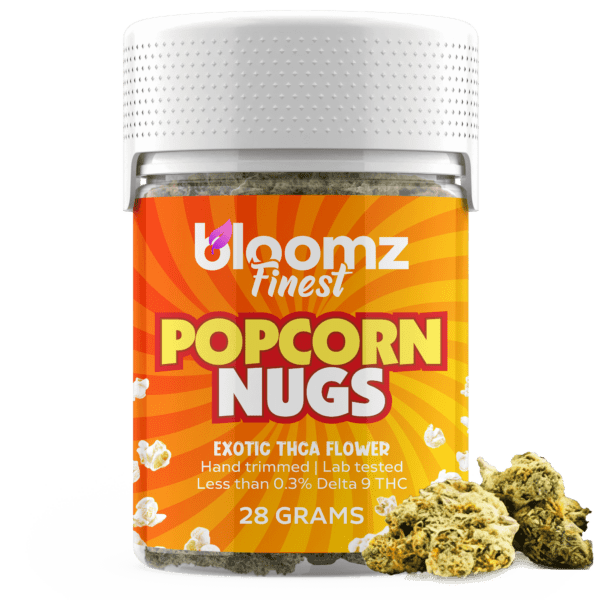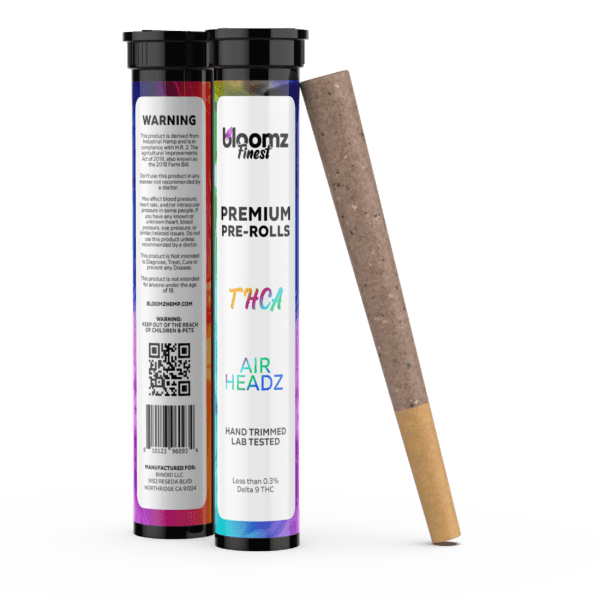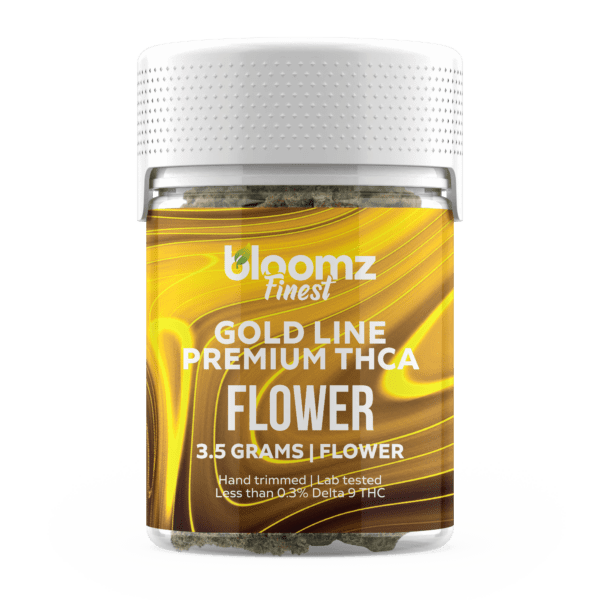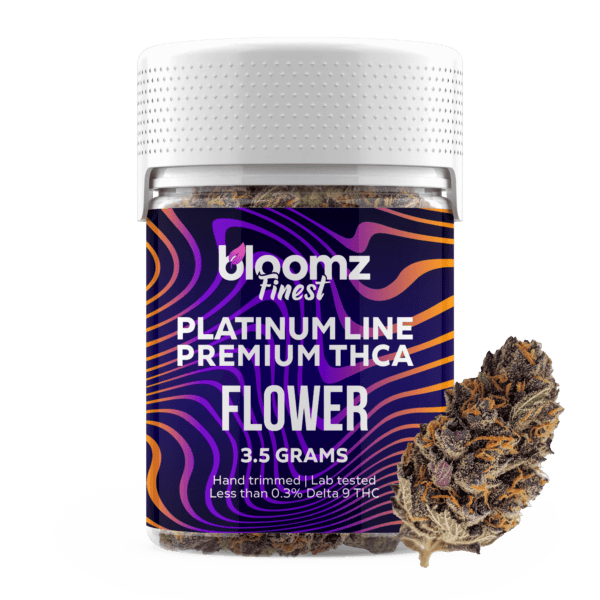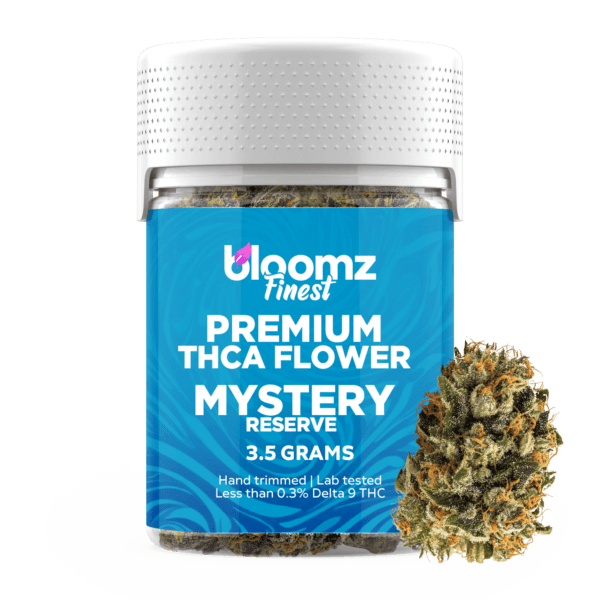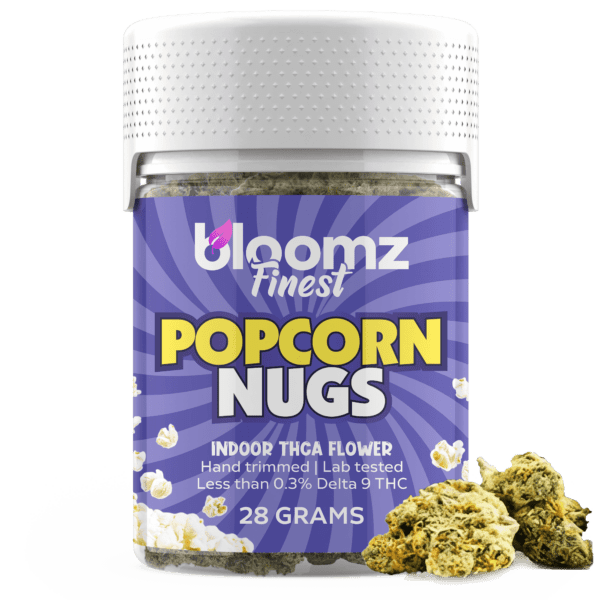In the vast and dynamic landscape of modern wellness, a fascinating choice often emerges between products that seek to perfect a classic form and those that offer boundless versatility. It is a decision that pits the concept of fortification against the power of formulation. On one side, we have an innovation that takes something timeless and beloved—the botanical flower—and imbues it with a new level of chemical stability and resilience. On the other, we are presented with a modern marvel of convenience, a perfectly crafted and endlessly adaptable treat that can be tailored to deliver almost any experience imaginable.
This is the fundamental choice that lies at the heart of the matchup between the uniquely durable HHC flower, and the other offers a more clinical, controlled, and discreet approach: the careful measurement of a single drop, a potent liquid that holds the distilled spirit of the plant. To explore this matchup is to weigh the appeal of the whole, intricate symphony against the focused power of a masterful solo, a decision that ultimately shapes the entire character of the experience to come.
To Buy HHC Flower Click Here
Recommended products
Why It’s Important to Breakdown the Matchup of HHC Flower vs. Tinctures
In an ever-maturing market where consumers are presented with an overwhelming array of choices, a detailed breakdown of two foundational product types like HHC flower and tinctures is essential for fostering true understanding. These two formats represent fundamentally different philosophies of consumption: one rooted in the timeless, ritualistic tradition of enjoying flower, and the other in the long and respected history of herbal apothecaries and modern extraction science. By carefully dissecting their unique characteristics—from their mechanisms of absorption and dosing precision to their flavor profiles and lifestyle integration—we can illuminate the distinct advantages and trade-offs of each.
This comparative analysis serves as a crucial tool, empowering consumers to move beyond surface-level familiarity and make a conscious, informed decision that aligns perfectly with their personal wellness goals, their demand for discretion, and their desired level of control:
Form & Function: The Ritual vs. The Regimen: At their core, these two products serve different functional philosophies. HHC flower is about the ritual of consumption. It is a hands-on, sensory-driven process that involves the tactile feel of the bud, the aroma it releases, and the physical act of smoking or vaping. The experience itself is a key part of the appeal. Tinctures, by contrast, are all about the regimen. They are a functional, often clinical, tool for delivering a precise dose. The process is quick, simple, and devoid of ceremony, designed to fit seamlessly and discreetly into a structured wellness routine where consistency and measurement are paramount.
Distinct Pathways of Absorption: The way the body absorbs the active compounds from these two products is profoundly different, leading to unique experiential timelines. HHC flower is consumed via inhalation, a method that delivers its active ingredients directly to the bloodstream through the lungs for a near-instantaneous onset of effects. Tinctures, on the other hand, offer a unique, hybrid pathway. When held sublingually (under the tongue), the compounds are absorbed through the thin mucous membranes directly into the bloodstream, bypassing the digestive system for a relatively fast onset (often 15-45 minutes). Any amount that is swallowed then undergoes the slower process of liver metabolism, similar to a traditional edible, providing a longer-lasting secondary wave of effects. This hybrid absorption model gives tinctures a unique character that is faster than edibles but longer-lasting than inhalation.
The Dosing Dynamic: The Artist’s Feel vs. The Scientist’s Measurement: The approach to dosing with these two formats could not be more different. Consuming flower is an intuitive, qualitative act of titration—the “artist’s feel.” The user takes a puff, gauges the effects in real-time, and decides if more is needed. This offers incredible in-the-moment control but is impossible to quantify in milligrams. Tinctures represent the “scientist’s measurement.” The graduated dropper allows for the administration of an exact volume, which corresponds to a precise, quantifiable milligram dose. This makes tinctures the undisputed champion of consistency and repeatability.
Discretion and Lifestyle Integration: How a product fits into the user’s daily life and need for privacy is a major consideration. HHC flower, with its associated paraphernalia (grinders, pipes, vaporizers) and its unmistakable, pervasive odor, is a product that demands a private and dedicated space for consumption. It is inherently low in discretion. Tinctures are the complete opposite. A small, unassuming bottle with a dropper can be carried discreetly in a purse or pocket. A dose can be taken quickly, quietly, and without producing any odor whatsoever. This makes tinctures an exceptionally versatile option that can be used almost anywhere without drawing any attention, fitting seamlessly into a wide variety of lifestyles.
Contender #1: HHC Flower
In the ever-evolving world of hemp-derived products, HHC flower has emerged as a uniquely resilient and intriguing option, earning a reputation as the “armored vehicle” of the cannabinoid flower market. It is a product that offers an experience remarkably similar to traditional THC, but with a key molecular difference that sets it apart: enhanced stability.
Like other novel cannabinoid flowers, HHC flower is not a product of simple agriculture but a testament to the power of modern chemistry to modify and improve upon nature’s offerings. It is a carefully crafted composite, a fusion of high-quality, natural hemp flower and a potent, lab-created HHC distillate. Its appeal lies in this combination of the familiar and the fortified, offering the timeless ritual of consuming flower with a cannabinoid that is built to last. For those seeking a classic, euphoric experience in a more durable and long-lasting form, HHC flower stands as a compelling and robust choice.
To fully understand HHC flower, one must first become acquainted with the unique cannabinoid that gives it its name. Hexahydrocannabinol (HHC) is a semi-synthetic cannabinoid that is created through a process called hydrogenation. To understand this, it’s helpful to start with its natural counterpart, THC. HHC is essentially a hydrogenated form of THC. The process is chemically analogous to how liquid vegetable oil is converted into solid or semi-solid margarine. In a laboratory setting, a THC molecule has its double bond in the top ring structure broken and saturated with hydrogen atoms, typically in the presence of a metal catalyst like palladium or nickel. This seemingly simple addition of hydrogen makes the molecule significantly more stable.
It becomes less susceptible to oxidation and degradation from exposure to heat, air, and UV light, which is why HHC products are known for having a much longer and more stable shelf life than products made with THC. This chemical robustness is one of its primary advantages. It’s also important to note that the manufacturing process creates a mixture of two different HHC molecules: 9R HHC, which actively binds to the body’s endocannabinoid receptors, and 9S HHC, which, due to a slight difference in its molecular structure, does not bind as effectively and is considered largely inactive. The ratio of these two isomers in the final product directly impacts its overall potency.
With this crucial scientific context, it becomes clear that “HHC flower” isn’t a strain of cannabis that a farmer can cultivate to be naturally rich in HHC but instead, it’s a manufactured, composite, and infused product. The process begins with high-quality, legally grown hemp flower, which is naturally rich in CBD (cannabidiol) and contains less than 0.3% Delta 9 THC. This beautiful, terpene-rich flower provides the physical structure, the aromatic compounds that create the flavor and smell, and a host of other minor cannabinoids.
This foundational hemp flower then serves as the base which is meticulously infused or coated with a pure HHC distillate, the potent, honey-like oil created through the hydrogenation process. This infusion process is what elevates the simple, non-intoxicating hemp flower into a potent, psychoactive product, delivering the unique and sought-after effects of HHC in a familiar, smokeable format. The quality and safety of the final product are therefore entirely dependent on two separate but equally important factors: the premium quality of the initial hemp flower and the verified purity of the HHC distillate with which it is infused.
Recommended products
The creation of a high-quality and effective HHC flower is a multi-stage process that requires a perfect marriage of expert agricultural practices and precise, high-level laboratory techniques. Each and every step in this complex chain of production is critically important to producing a final product that is safe, potent, consistent, and enjoyable for the end consumer:
Cultivation of Premium Hemp Flower: The foundation of any good HHC flower is expertly grown hemp flower. Reputable manufacturers source visually appealing, aromatic, and terpene-rich CBD or CBG flower that has been meticulously cultivated, dried, and cured. The natural terpenes and minor cannabinoids in this base flower are critical as they will provide the aroma, flavor, and contribute to a more nuanced “entourage effect” in the final product.
Creation of HHC Distillate: In a separate, highly controlled laboratory environment, the active ingredient is created. The process typically starts with hemp-derived CBD, which is first converted to Delta 8 or Delta 9 THC. This THC is then placed in a specialized reactor, where it is combined with hydrogen gas and a metal catalyst under high pressure. This initiates the hydrogenation process, which saturates the THC molecules to create HHC. The resulting liquid then undergoes extensive refinement and distillation to remove the catalyst and any other unwanted byproducts, yielding a thick, potent, and highly pure HHC distillate.
The Infusion and Coating Process: This is the manufacturing step where the hemp flower and the HHC distillate are combined. There are several methods used to accomplish this. A common technique involves lightly heating the thick distillate to reduce its viscosity and then spraying it as evenly as possible over the hemp buds, often while they are being gently tumbled to promote an even coating. A more advanced, solventless technique is “cryo-infusion,” where the HHC distillate is frozen and crushed into a fine powder, which is then dusted over the flower before being gently heated to infuse into the bud.
Post-Infusion Curing and Drying: After the sticky distillate has been applied, the flower is often overly moist and tacky to the touch. The product must then undergo a final curing or drying stage to bring it back to an optimal state for consumption. This step is crucial for ensuring the final product is not unpleasant to handle, grinds up properly in a grinder without gumming it up, and burns smoothly and evenly when smoked.
Comprehensive Third-Party Lab Testing: Before the final product can be sold, it is absolutely essential that it is tested by an accredited third-party laboratory. The Certificate of Analysis (COA) is the consumer’s most important tool. It not only verifies the potency of the HHC but must also be scrutinized to ensure the product is free from any residual solvents, heavy metals, or leftover catalyst from the hydrogenation process, guaranteeing a safe and clean final product.
The market for HHC flower offers a variety of options that are primarily differentiated by the quality of the base hemp flower used and the sophistication of the infusion process. Because HHC offers an experience very similar to traditional THC, it is a popular choice for enhancement across all tiers of hemp flower quality:
Indoor HHC Flower: This is considered the top-shelf option. The process starts with premium, indoor-grown CBD or CBG hemp flower, which is prized for its dense bud structure, vibrant appearance, and rich terpene profile. When this high-quality base is carefully infused with pure HHC distillate, the result is a superior product that delivers the beautiful aroma and flavor of the natural terpenes alongside the potent effects of HHC.
Outdoor HHC Flower: This is a more budget-friendly category. The base material is sun-grown, outdoor CBD hemp flower. While often less cosmetically perfect and potentially less aromatic than its indoor counterpart, outdoor flower can still be of high quality and provides a more affordable foundation. Once infused, it delivers the same core HHC effects but may have a more muted flavor and aroma profile.
HHC Small Buds: Similar to other types of flower, “small buds” or “smalls” refer to the popcorn-sized buds from a harvest. HHC smalls are simply smaller buds of CBD or CBG hemp flower that have been infused with HHC distillate. They offer the exact same potency and experience as the larger nugs from the same batch but are sold at a lower price point, making them an excellent value.
HHC Moonrocks: This is a particularly potent and popular application for HHC. The creation of an HHC moonrock is a three-step process. It begins with a solid nug of CBD or CBG flower, which is then fully coated in a sticky layer of high-purity HHC distillate. While the distillate is still wet, the entire bud is then rolled in a thick blanket of CBD or CBG kief (pure, sifted trichomes). The resulting product is incredibly potent, slow-burning, and offers a powerful, multi-layered experience.
HHC Pre-Rolls, Blunts & Joints: For ultimate convenience, many manufacturers offer pre-packaged, ready-to-smoke options. These consist of ground-up HHC flower that has been professionally rolled into papers (joints) or hemp wraps (blunts). They eliminate the need for any grinding or rolling on the part of the consumer, providing a simple, portable, and accessible way to enjoy the effects of HHC flower without any of the associated preparation.
When purchasing HHC flower, it is vital to understand the significance of the “strain” name. A product labeled “Blue Dream HHC Flower” is not a naturally grown HHC strain. The name, in this case “Blue Dream,” refers to the genetic strain of the base CBD or CBG hemp flower that was used in the manufacturing process. The overall experience will be a powerful synergy between the natural terpene profile of that base flower and the potent, overarching effects of the HHC distillate itself. The terpenes from the base strain can help to “steer” or modulate the HHC experience:
Indica: When an Indica-dominant CBD hemp strain, known for its relaxing terpene profile rich in compounds like myrcene, is used as the base for HHC Flower, the resulting experience is typically deeply calming and sedating. The natural soothing properties of the Indica terpenes combine with the potent and euphoric body sensation of HHC. This creates a product that is perfectly suited for evening use, helping users unwind, decompress, and sink into a state of profound, blissful tranquility.
Sativa: If a Sativa-dominant CBD hemp strain is used as the base, its uplifting and energetic terpenes, like limonene and terpinolene, will combine with the powerful euphoria of HHC. This could result in an intensely cerebral, creative, and uplifting experience. This combination is likely to be very stimulating and is ideal for daytime use, creative projects, or social activities where a potent boost of energy and positive mood is desired.
Hybrid: A balanced Hybrid CBD hemp strain used as the base can offer a middle ground. The blend of terpenes may provide both cerebral stimulation and physical relaxation, creating a powerful but potentially more well-rounded experience. This versatility makes hybrid HHC flower a fantastic all-purpose choice that is suitable for a wide range of situations and times of day.
The legal status of HHC flower in the United States is complex and highly contested. Its claim to legality is rooted in the 2018 Farm Bill, which legalized hemp and its derivatives so long as they contain less than 0.3% Delta 9 THC. Since HHC is not Delta 9 THC, it is sold under this provision. However, its legal standing is arguably even more precarious than that of Delta 8 THC. Because it is created through the hydrogenation of THC, which is often first converted from CBD, it is several steps removed from a naturally occurring cannabinoid.
This has led many legal experts and regulators to argue that it falls under the definition of a “synthetically derived” substance and is therefore a controlled substance under the Federal Analogue Act. In response to this ambiguity, a growing number of states have passed laws to explicitly ban or regulate the sale of HHC and other semi-synthetic cannabinoids. The legal landscape is volatile and consumers must research the current laws in their specific location before considering a purchase.
Recommended products
The methods for consuming HHC flower are identical to those for any other type of cannabis flower, as the primary goal is always to apply heat to the product to aerosolize the active cannabinoids for inhalation. The choice of method can impact the overall experience, influencing factors like flavor, smoothness, and convenience. As with other infused flowers, the sticky nature of the HHC distillate can sometimes make the buds more difficult to grind compared to non-infused flower:
Vaping (using a portable or desktop vaporizer): Vaporizing is often considered the ideal method for consuming HHC flower. A good vaporizer gently heats the flower to a precise temperature, allowing the HHC distillate and the natural terpenes of the base flower to turn into a vapor without actually burning the plant material. This results in a significantly smoother, cooler, and more flavorful inhale that truly allows the user to appreciate the aromatic profile of the underlying hemp strain.
Smoking: This is the most classic, accessible, and straightforward method. It involves the direct combustion of the HHC flower, which can be done in a variety of tools such as a glass pipe, a water pipe (bong), or by rolling the ground material into a joint (paper) or a blunt (hemp wrap). While the intense heat of burning can destroy some of the more delicate terpenes, many users prefer the robust and immediate effects and the time-honored ritual associated with smoking.
Cooking/Baking: It is technically possible to use HHC flower to make homemade edibles. The flower would first need to be decarboxylated (heated in an oven) to ensure all cannabinoids are active, and then infused into a fat like butter or oil. Given the precision, convenience, and wide availability of professionally made HHC edibles, most consumers who prefer an ingestible format will simply purchase those products directly.
The overall effects of HHC flower are what make it such a popular choice for those seeking an alternative to traditional THC. The experience is widely reported to be remarkably similar in character to that of Delta 9 THC. It produces a powerful sense of euphoria, a significant mood lift, and a pleasant, warm body sensation that is both relaxing and comforting. The potency is generally considered to be somewhere between that of Delta 8 THC and Delta 9 THC, making it a robust and satisfying experience for most users.
Some users report that the mental effects feel slightly more energetic and less sedating than Delta 9 THC, but this can vary greatly depending on the individual and the terpene profile of the base flower. The primary distinguishing factor of HHC is not so much in its immediate effects, but in its underlying chemical stability, which gives the product its impressive longevity.
Pros & Cons
HHC flower, a product of modern chemical innovation applied to a traditional form, offers a unique and compelling experience. However, its semi-synthetic nature and method of creation come with a very specific set of pros and cons that must be carefully weighed.
Pros:
Enhanced Stability and Longer Shelf Life: The single greatest advantage of HHC is its chemical stability. The hydrogenation process removes a double bond that is susceptible to oxidation. This means HHC is significantly more resistant to degradation from heat, light, and air compared to THC, giving HHC flower a much longer and more stable shelf life.
Effects are Very Similar to Delta 9 THC: For users seeking the classic, euphoric, and relaxing experience of traditional THC, HHC is an excellent analogue. Many users report that the effects are nearly indistinguishable from those of Delta 9 THC, providing a familiar and satisfying sense of bliss.
Legal Accessibility in Certain Regions: Due to its legal standing under the 2018 Farm Bill as a hemp derivative that is not Delta 9 THC, HHC is legally available for purchase in many states where traditional cannabis is not. This provides a legal pathway for many people to access a potent, THC-like experience.
Combines Familiar Ritual with a Durable Cannabinoid: HHC flower allows consumers to enjoy the timeless, hands-on ritual of grinding, packing, and smoking or vaping flower. This cherished process is combined with a modern, scientifically fortified cannabinoid that is built to last, offering the best of both worlds.
Fast-Acting Effects via Inhalation: Like all forms of flower, the effects of HHC flower are felt almost instantaneously when smoked or vaped. This rapid onset provides immediate feedback and is perfect for users who want to feel the effects right away without the long wait associated with edibles.
Wide Variety of Strain Experiences: Because HHC flower is made by infusing high-quality CBD hemp flower, consumers can choose from a vast library of underlying strains. By selecting a product based on an Indica, Sativa, or Hybrid hemp strain, users can tailor the experience to be more relaxing, more uplifting, or more balanced.
Potent and Satisfying Experience: HHC is a potent cannabinoid, generally considered to be stronger than Delta 8 THC. It provides a robust and well-rounded experience that is satisfying for both recreational and wellness-focused users seeking a significant effect.
Less Intense Aroma Than Some Cannabis: While HHC flower does have an aroma from the base hemp flower, the process of infusing it with distillate can sometimes mute the overall pungency. For some users, this can be an advantage, as it may be slightly more discreet in terms of odor.
Supports the Hemp Farming Industry: The creation of HHC flower relies on a steady supply of high-quality CBD and CBG hemp flower. The popularity of this product category directly supports hemp farmers across the country, providing them with a crucial market for their agricultural products.
A Functional, Uplifting Buzz: Many users describe the HHC experience as being slightly more energetic and sativa-like compared to Delta 9 THC. This can make it a more functional option for daytime use or social situations where a positive and uplifting mood is desired without heavy sedation.
Cons:
It is a Semi-Synthetic, Not Natural, Product: For consumers who prioritize natural products, HHC flower can be a significant compromise. The active ingredient is created through a multi-step chemical process in a lab, including hydrogenation. This artificial nature is a major drawback for purists.
Potential for Inconsistent Quality: The quality of HHC flower can vary dramatically between brands. The final product can be negatively impacted by a low-quality base flower, an impure HHC distillate, or an uneven and sloppy infusion process, leading to a harsh or unpleasant experience.
Risk of Residual Contaminants: The hydrogenation process used to create HHC requires the use of heavy metal catalysts like palladium. If the final distillate is not properly and extensively refined, there is a risk that these harmful residues could end up in the final product. It is absolutely crucial to only purchase from reputable brands that provide comprehensive, full-panel lab tests.
Highly Contentious and Uncertain Legal Status: HHC exists in a precarious legal gray area. Its semi-synthetic nature makes it a prime target for state-level bans and potential federal reclassification under the Analogue Act. Consumers face the risk that the product could become illegal in their area at any time.

Contender #2: Tinctures
Stepping into the spotlight from a long and storied history in both traditional herbalism and modern pharmacology, the tincture represents the pinnacle of precision, discretion, and versatility in the world of botanical extracts. This humble yet powerful format consists of a concentrated liquid extract, typically held in a small glass bottle with a graduated dropper, that allows for an unparalleled level of control over dosing. Tinctures bridge the gap between the rapid effects of inhalation and the long-lasting nature of traditional edibles, offering a unique, hybrid experience that has made them a cornerstone of the wellness community. They are the embodiment of the apothecary’s craft, a potent and refined essence of the plant that is designed for ease of use, consistency, and rapid absorption. For those who value meticulous control, a smoke-free experience, and ultimate discretion, the tincture stands as a formidable and highly sophisticated choice.
A tincture is a concentrated liquid extract of a plant or botanical material. The process of creating one involves soaking the plant matter in a solvent, such as high-proof alcohol or a fat like MCT (medium-chain triglyceride) oil, for a period of time. The solvent pulls out the active compounds from the plant, creating a potent, infused liquid. This liquid is then strained and bottled. The final product is a highly concentrated solution that can be administered in very small, precise amounts, usually drop by drop. Tinctures can be taken in two primary ways. The most common and effective method is sublingual administration, where the user places the desired number of drops under their tongue and holds it there for 60-90 seconds before swallowing.
This allows the active compounds to be absorbed directly into the bloodstream through the dense network of capillaries in the mucous membranes, bypassing the digestive system for a faster onset. The second method is simple ingestion, where the user swallows the tincture directly or adds it to a food or beverage. When taken this way, the tincture behaves like a traditional edible, undergoing first-pass metabolism in the liver for a slower onset but longer duration of effects.
The versatility of the tincture format allows for the creation of highly specialized formulas designed to support specific wellness goals. Manufacturers often create synergistic blends that combine multiple active ingredients to produce a more targeted and effective product. This has led to a market filled with purpose-driven tinctures catering to a wide range of needs:
Sleep: Tinctures formulated to support a restful night are incredibly popular. These blends often start with a base of a relaxing cannabinoid like CBN or CBD. They are frequently enhanced with melatonin, the body’s natural sleep-regulating hormone, to help signal to the body that it is time to rest. To round out the formula, they may also include extracts of traditional herbal botanicals like chamomile, valerian root, and lavender, all of which have a long history of use for promoting calm and tranquility.
Energy: At the opposite end of the spectrum, energy-focused tinctures are designed to provide a clean, sustained boost to start the day or overcome a midday slump. These formulas might contain stimulating cannabinoids like THCV, combined with natural caffeine sources like green tea extract or coffee bean extract. To support mental clarity alongside physical energy, they often include B-vitamins (especially B12), and adaptogenic herbs like ginseng or rhodiola, which are used to support the body’s resilience.
Relaxation: For general, non-sedating relaxation, these tinctures are designed to ease everyday tensions and promote a sense of calm well-being. They typically feature a high concentration of CBD as their base. This is often complemented by the addition of the amino acid L-Theanine, known for promoting a state of “calm alertness,” and extracts from soothing botanicals like lemon balm and passionflower to create a gentle, balancing effect suitable for daytime use.
Wellness: This broad category includes tinctures designed for daily foundational support. They often feature a blend of multiple cannabinoids, such as CBD, CBG, and CBC, to provide a full-spectrum or broad-spectrum effect. These may be combined with powerful antioxidants from superfoods like turmeric (containing curcumin) or elderberry, creating a comprehensive daily supplement to support the body’s overall balance and vitality.
Beauty: A newer but rapidly growing category, beauty-focused tinctures are designed to support skin, hair, and nail health from the inside out. These “ingestible beauty” products typically combine the balancing properties of CBD or other cannabinoids with popular nutricosmetics. This can include collagen peptides to support skin elasticity, biotin (Vitamin B7) for hair and nail strength, and hyaluronic acid for skin hydration, creating a comprehensive formula for a radiant appearance.
Beyond complex botanical blends, the tincture format is also an extremely common and effective delivery system for essential vitamins and minerals. Liquid vitamin tinctures have become a popular alternative to pills and capsules for several reasons. For individuals who have difficulty swallowing pills (a condition known as dysphagia), a liquid format is a far more comfortable and accessible option. Furthermore, some proponents argue that liquid vitamins may have a higher bioavailability and absorption rate than solid pills, as the body does not need to break down a capsule or binders, and the nutrients are already in a dissolved state.
Common vitamin tinctures include Vitamin D3, often suspended in an oil base to aid absorption of this fat-soluble vitamin; Vitamin B12, which is crucial for energy metabolism and is a popular supplement, especially for those on plant-based diets; and comprehensive liquid multivitamin formulas that provide a broad spectrum of essential nutrients in a single, easy-to-take dose. Mineral tinctures, such as those for iron or zinc, are also widely available.
The most vibrant, innovative, and rapidly evolving segment of the modern tincture market is once again, unquestionably those infused with a vast array of hemp-derived cannabinoids. The unparalleled precision dosing, smoke-free nature, and versatility of the tincture format make it the perfect medium for consumers to safely and effectively explore the nuanced world of these fascinating compounds. The market for cannabinoid-infused tinctures is often stratified into tiers based on the potency and psychoactive nature of the cannabinoids used, empowering consumers to select a product that perfectly aligns with their individual tolerance, experience level, and desired outcome:
Non-Intoxicating: This is the foundational category for wellness-focused users. These tinctures contain cannabinoids that do not produce a euphoric “high.” CBD is the most well-known, used for general balance and well-being. CBN is highly sought after for its relaxing and sedative properties, making it a star in nighttime formulas. CBG is another popular option, often explored for its soothing effects. This category also includes tinctures made with the raw, unheated acidic forms of cannabinoids like CBDA and CBGA, which are believed to have their own unique wellness properties separate from their decarboxylated counterparts.
Mild Potency: For users seeking a gentle, functional, and often non-overwhelming psychoactive experience, this tier is ideal. Tinctures featuring Delta 10 THC are known for a mild, sativa-like cerebral buzz that is often described as uplifting and creativity-enhancing. THCV is another unique cannabinoid in this category, sometimes called “diet weed,” as it can produce a short-lived, clear-headed, and stimulating effect that some users find suppresses appetite, a stark contrast to the typical effects of THC.
Moderate Potency: This tier includes the most common and well-known intoxicating cannabinoids. Delta 8 THC tinctures provide a robust euphoric effect that is often described as being clearer-headed and less intense than traditional THC. Delta 9 THC tinctures, made with hemp-derived THC in compliance with the Farm Bill, offer the classic, potent, and well-rounded experience that cannabis is famous for. Tinctures can also contain THCA, which will be converted to Delta 9 THC when metabolized by the liver, behaving similarly to a Delta 9 tincture when ingested.
Strong Potency: This category is reserved for experienced users with a high tolerance, as these cannabinoids are significantly more potent than Delta 9 THC. THC-P is a standout, believed to bind to the CB1 receptor over 30 times more effectively than Delta 9 THC, resulting in an exceptionally powerful and long-lasting experience. Other novel, high-potency cannabinoids like THC-B, THC-H, and the hydrogenated cannabinoid HHC (which has a potency similar to Delta 9 THC but is included here for its novelty and strength) also fall into this category, offering a new frontier of potent effects for the seasoned consumer.
Amanita mushroom-infused tinctures offer a potent and precisely dosable way to experience the unique psychoactive properties of this fungus. It is essential to reiterate that Amanita mushrooms do not contain psilocybin; their effects are derived from the compound muscimol. In a tincture format, a concentrated extract of muscimol is suspended in a liquid base, allowing for microdosing or macrodosing with drop-by-drop accuracy. This is particularly important with Amanita, as the experience can be very intense and is highly dose-dependent. The effects are often described as dissociative, sedative, and deeply dream-like, sometimes involving auditory hallucinations or a distorted perception of time and space. A tincture provides a much safer and more consistent method of consumption than foraging or consuming the raw mushroom, which can have variable potency.
Functional mushroom-infused tinctures are a staple of the modern wellness and nootropics movements. These non-psychoactive extracts are designed for daily use to support everything from cognitive function to immune health. The tincture format allows for a highly concentrated dose of the mushroom’s beneficial compounds, such as beta-glucans and triterpenes, without having to consume the whole mushroom powder. Popular functional mushroom tinctures include Lion’s Mane for its reputed benefits to cognitive function and nerve support; Reishi, known as an adaptogen that helps the body manage everyday challenges and promotes relaxation; Cordyceps for supporting energy, stamina, and athletic performance; and Chaga and Turkey Tail, both prized for their incredibly high antioxidant content and immune-supportive properties.
Kratom tinctures, often sold as highly concentrated liquid extracts, are a popular choice for experienced Kratom users seeking convenience and potency. These tinctures are made by extracting the active alkaloids, primarily Mitragynine and 7-hydroxymitragynine, from the Kratom leaf. The resulting liquid is far more potent by volume than raw powder, meaning only a small amount is needed. This format allows for rapid absorption and a quick onset of the plant’s dose-dependent effects: stimulating and energizing at lower doses, and more relaxing and euphoric at higher doses. Tinctures are often sold as “full-spectrum” extracts, containing a range of alkaloids, or as isolated extracts, providing a more targeted experience.
Kava, the traditional relaxation-promoting root from the Pacific Islands, is also available in a convenient tincture format. Kava tinctures capture the active compounds, known as kavalactones, in a concentrated liquid form. This provides an easy, portable, and smoke-free way to experience the calming, sociability-enhancing effects of the plant. A few drops held under the tongue can quickly promote a sense of mental tranquility and physical ease, making it an excellent tool for unwinding after a stressful day or for use as a social lubricant in place of alcohol. The tincture format allows for precise control over the dose, so the user can dial in the desired level of relaxation without becoming overly sedated.
The overall effects of a tincture are defined by its unique hybrid absorption mechanism. When a tincture is held under the tongue, the sublingual absorption of its active compounds through the mucous membranes provides a relatively rapid onset of effects, typically within 15 to 45 minutes. This is significantly faster than a traditional solid edible because it bypasses the lengthy process of digestion and first-pass metabolism in the liver.
However, any portion of the tincture that is eventually swallowed will then be processed like an edible. This creates a two-stage effect: a faster-acting initial wave from the sublingual absorption, followed by a longer-lasting, more subtle, and sustained wave of effects from the portion that was digested. This results in an experience that is the best of both worlds for many users—it’s faster to kick in than a gummy or brownie, but the effects last much longer than they would from inhalation.
Pros & Cons
The tincture, with its long history and modern applications, offers a compelling list of benefits, particularly in the realms of precision and discretion. However, this format also has its own set of trade-offs, which are important to consider. Its strengths lie in its clinical control and versatility, while its weaknesses are often related to its taste and the specific nature of its effects curve.
Pros:
Unmatched Dosing Precision: The single greatest advantage of a tincture is the ability to achieve a highly precise and quantifiable dose. The included graduated dropper allows the user to measure out an exact volume of liquid, which corresponds to a specific milligram amount of the active ingredient. This drop-by-drop control is ideal for microdosing or for users who need to find and maintain a consistent therapeutic window for their wellness routine.
Ultimate Discretion and Portability: Tinctures are the epitome of discreet consumption. A small, typically 1-ounce glass bottle is easy to carry in a pocket, purse, or desk drawer without attracting any attention. A dose can be administered quickly, quietly, and without producing any smoke, vapor, or noticeable odor, making it suitable for use in a wide variety of settings.
A Unique Hybrid Onset and Duration: The sublingual method of absorption offers a “best of both worlds” timeline. It provides a faster onset of effects than traditional edibles, allowing the user to feel the benefits relatively quickly. At the same time, it still offers a longer duration of effects than inhalation, providing a sustained experience that can last for several hours, making it a highly efficient and versatile option.
A Completely Smoke-Free Experience: For the large number of consumers who wish to avoid inhalation due to respiratory health concerns, personal preference, or the environment they are in, tinctures are a perfect solution. They deliver the active compounds effectively without any involvement of the lungs, providing a clean, smoke-free alternative.
Minimal Caloric and Sugar Content: Unlike baked goods or many gummies, tinctures are virtually free of calories, sugars, or other additives. They are typically just a botanical extract and a carrier oil. This makes them an ideal choice for individuals on strict diets, such as ketogenic diets, or for anyone who is mindful of their sugar and calorie intake.
Exceptional Versatility of Use: Tinctures are incredibly versatile. They can be taken sublingually for fast absorption, swallowed directly, or easily added to almost any food or beverage. A few drops can be mixed into a morning smoothie, a cup of tea, or even a salad dressing, making it simple to incorporate them into an existing daily routine.
Long Shelf Life and Stability: When stored properly in a cool, dark place, tinctures, especially those with an alcohol or MCT oil base, are very shelf-stable. They can maintain their potency for a year or even longer without significant degradation. This allows consumers to purchase them without worrying about rapid spoilage.
Cost-Effective in the Long Run: Because tinctures are so highly concentrated, a single bottle can contain a large number of doses. While the initial upfront cost of a bottle might seem higher than a single pre-roll, the cost per milligram of the active ingredient is often significantly lower, making tinctures a very economical choice for regular users.
Ideal for Creating Custom Blends: Advanced users can use individual tinctures of different compounds to create their own custom ratios. For example, one could combine a CBD tincture with a CBG tincture to create a personalized blend that meets their specific needs. This level of customization is not possible with most other pre-formulated products.
A Gentle and Controllable Onset: The gradual and predictable onset of effects from a sublingually administered tincture is often perceived as a gentler experience compared to the rapid rush of inhalation. This controlled build-up can be more comfortable and less overwhelming for new users or those sensitive to strong effects, making for a more manageable and pleasant introduction.
Cons:
The Taste Can Be Unpleasant: One of the most common complaints about tinctures is their taste. The natural flavor of the botanical extract, especially from hemp, can be very earthy, bitter, and “hempy.” While many brands add flavorings like mint or citrus to mask this, the underlying taste of the carrier oil and the extract can still be quite strong and unpalatable for some users.
Requires Holding Under the Tongue: To achieve the fastest onset of effects, the user must hold the oily liquid under their tongue for 60-90 seconds. Some people find this sensation to be awkward, uncomfortable, or unpleasant. It also requires a bit of patience and mindfulness, making it a less “fire and forget” method than simply swallowing a capsule.
Potential for Messiness or Spillage: Dealing with a liquid oil and a dropper can sometimes be messy. It is possible to spill the oil, which can be difficult to clean and wastes the product. The dropper can also become sticky over time, making it a less clean and convenient method compared to a self-contained product like a gummy or capsule.
Delayed Gratification Compared to Inhalation: While tinctures are faster than traditional edibles, they are still significantly slower than inhalation. For users seeking immediate, on-the-spot effects for an acute need, the 15-45 minute wait time for a tincture to take effect can be a significant drawback. It does not provide the same level of instant gratification as smoking or vaping.
How to Go About Choosing Which Option
The journey to choosing between the resilient artisan craft of HHC flower and the precise science of a tincture is ultimately a journey of self-discovery. This decision is not about crowning a superior product but about identifying the superior product for your unique needs, preferences, and lifestyle. It requires a moment of reflection on what you value most in an experience: the immersive, sensory ritual of the enhanced plant or the discreet, clinical control of its refined essence? By honestly assessing your priorities regarding speed, control, discretion, and flavor, you can confidently navigate this choice and select the format that will seamlessly and satisfyingly integrate into your life.
To bring this choice into clearer focus, it is helpful to weigh your preferences across several key differentiating factors. By considering where you stand on each of these points, the path to your ideal product will become much more apparent:
Timeline of Experience (Onset & Duration): This is the most critical question. Do you need immediate effects, something you can feel within moments to address a current need? If speed is your absolute priority, the near-instantaneous onset of inhaled HHC flower is unbeatable. Or, do you prefer a balance—an experience that is faster than a traditional edible but lasts for several hours with a steady, predictable curve? If this “best of both worlds” timeline appeals to you, the unique hybrid absorption of a sublingual tincture is the perfect match.
Dosing Philosophy (Intuitive vs. Quantitative): How do you prefer to manage your dose? Do you enjoy the organic, intuitive process of titration—taking a puff, waiting a moment, and assessing how you feel before proceeding? This is the art of using flower. Or, are you a data-driven individual who values precision and repeatability above all else? If you want to know that you are taking exactly 15mg every single time, the unparalleled, drop-by-drop accuracy of a tincture is the only choice that will satisfy that need for quantitative control.
Discretion and Lifestyle Integration: Consider the environment in which you’ll be using the product. Is it primarily for use in the comfort and privacy of your own home, where the aroma and ritual of flower can be freely enjoyed? In that case, flower is an excellent option. However, if you need a product that you can use on the go, at work, or in any situation that demands subtlety and privacy, the odorless, compact, and unassuming nature of a tincture makes it the vastly superior choice for a discreet lifestyle.
Key Feature: Stability vs. Precision: What is your ultimate priority? Is it the enhanced chemical stability and long shelf life of the HHC molecule, ensuring your flower remains potent and resilient over time? Or is it the absolute precision and control of a tincture, which allows you to tailor your experience with scientific accuracy? This choice between the enduring nature of the product and the precise control over its application is a key differentiator.
|
Feature |
HHC Flower |
Tinctures |
|---|---|---|
|
Product Nature |
Enhanced Agricultural Product (Infused Hemp) |
Concentrated Liquid Extract |
|
Primary Method |
Inhalation (Smoking/Vaping) |
Sublingual (Under the tongue) & Ingestion |
|
Onset Time |
Very Fast (2-10 minutes) |
Fast-ish (15-45 minutes) |
|
Duration of Effects |
Shorter (2-4 hours) |
Medium to Long (3-6 hours) |
|
Dosing Control |
Low precision (intuitive titration) |
Highest precision (drop-by-drop accuracy) |
|
Key Advantage |
High chemical stability and longevity |
Unmatched dosing precision and discretion |
|
Experience |
Ritualistic, sensory, rapid feedback |
Functional, controllable, and versatile |
|
Best For |
Users wanting a potent, stable, and fast-acting flower experience |
Users wanting precise dosing and a balanced onset/duration |
The Luthier and The Locksmith: A Final Word on Form and Function
In the final analysis, the decision between HHC Flower and a tincture is a choice between two profoundly different philosophies of craftsmanship and application. The HHC flower is like the work of a master luthier, who takes a classic, resonant instrument—the hemp flower—and applies a modern, protective lacquer to make it more durable and enduring, preserving its ability to create beautiful music for a longer time. The tincture, conversely, is like the work of a master locksmith. It is not concerned with the instrument itself, but with creating a single, precise key designed to unlock a very specific and controlled effect within the intricate tumblers of the body’s systems.
Neither the luthier’s art nor the locksmith’s science is inherently superior. The truly enlightened choice comes from understanding your own needs: do you wish to play the rich, resonant music of the instrument, or do you need the precise, functional key to unlock a specific door?
To Buy HHC Flower Click Here
Recommended products
-
THCA Flower – Indoor Exotics – Gold Line
$37.99$69.99 -
THCA Flower – Platinum Line
$49.99$79.99 -
THCA Flower – Mystery Reserve
$41.99$79.99 -
THCA Smalls
$149.99$256.99

